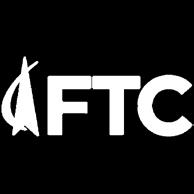JULY/AUGUST 2025

FTC CEO retires after 32 years



JULY/AUGUST 2025

FTC CEO retires after 32 years


By Shirley Bloomfield, CEO NTCA–The Rural Broadband Association
Celebrate decades of digital innovation
World Wide Web Day is Aug. 1. It’s a celebration of a 1993 internet milestone that transformed our society, changing everything from work and health care to communications and entertainment.
Before the web, accessing information and resources on the interconnected computers spanning the globe required specific software and skills. Email use was even limited—in business, fax machines still ruled. Then, researchers in Switzerland, including Tim Berners-Lee, developed the World Wide Web. Not only was information easier to share, but the freely distributed tools that made it possible fueled decades of innovation.
Now, rural internet service providers like yours manage the high-speed networks unlocking the modern web. NTCA’s 2024 Broadband/Internet Availability Survey Report showed that 89% of rural customers served by providers responding to the survey have access to speeds of at least 100 Mbps.
That’s a dramatic change compared to 1993, when connecting was slow and noisy, reliant on dial-up modems and copper lines. Back then, a speed of 14.4 Kbps was great—nearly 7,000 times slower than a 100 Mbps connection today.
Students can now access endless resources online and attend virtual classes. Telemedicine brings services and specialists otherwise unavailable in rural communities. Farmers monitor crops, manage resources and keep livestock healthy with internet-connected tools. And that’s only the beginning.
NTCA members across rural America make it all possible. So, let’s take a moment to celebrate not only World Wide Web Day, but also the communications professionals in your community.
Thank you for all you do.
Local businesses are a cornerstone of the United States’ economy, particularly in rural communities. You need to look no further than your local utility providing a fast, reliable internet network. Companies like these are not only committed to providing excellent service but also uplifting their communities.
A report last year by Capital One Shopping, a site operated by the banking and credit card company, highlighted the importance of local retailers.
• In one week, 91% of American consumers shop at small and local stores.
• 68%, or $68 out of every $100, spent at local stores remains in the local economy.
• American shoppers spent an estimated $4.51 trillion at local stores in 2023, equivalent to 54.3% of all retail sales
• The average person shops locally 213 times per year or once every 1.7 days
• Shopping small keeps dollars local.
• Dollars spent at an independent business may recirculate in the local economy an average of six to 15 times
• Small businesses make up to 136% more charitable donations per employee than businesses with 500 or more employees.
• Residents of communities with more independent businesses drive three-quarters fewer miles than their neighbors who have less access to small local shops.

Long days outdoors are a joy of summer. A little sun can even increase your vitamin D levels, which has a range of health benefits. On the other hand, bathing in too much sunlight is not good for the skin, raising the potential for skin cancer. And some people are more susceptible than others.
So, it just makes sense to track and manage sun exposure. Think about all the things we already monitor—steps, sleep and even what we eat. Why not also track exposure to ultraviolet light, the rays produced by the sun?
In fact, your phone’s weather app may already offer a forecast for expected sun exposure at your location. Other apps though can ramp up the details. Early UV apps were basically glorified timers with general advice tacked on. Today’s versions
are more sophisticated, providing information on everything from cloud cover to how much sun is reflecting off surfaces around you.
These apps often have easy-to-understand color-coded displays that show your risk level. Most will customize their recommendations based on your skin type, which means you’re getting advice that’s relevant to you specifically.
Some of the more advanced options do more than track UV exposure. They can use your smartphone’s camera to analyze your features and suggest proper levels of sun protection. Many will even send timely reminders when it’s time to reapply sunscreen based on your activity level and which products you’re using.
The more comprehensive sun safety apps don’t only monitor UV rays. They
include educational content about sun damage and skin cancer prevention. Some even track vitamin D production, helping you balance protection with healthy sun exposure.
Family-friendly versions allow users to set up profiles for multiple family members with different skin types, making it much easier to manage sun protection during group outings like beach days or picnics. Of course, no apps replace a proper checkup with your dermatologist, but they do offer daily reminders about a danger we can’t always see. So, next time you’re heading outdoors for a day in the sun, check the app store for your favorite device and see if there’s an app that provides the details you need to stay safe. At minimum, the apps can keep the importance of skin protection top of mind.
Mom firmly believed there was never an inappropriate time for a thank-you note. I’ve come to appreciate that sentiment. Thus, after 23 years of enjoyably writing this column, I feel it only fitting that my final entry should take that form. There are, after all, a number of people I would like to thank.
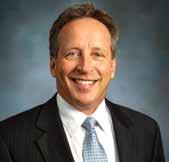
FRED JOHNSON Chief Executive Officer
Leading FTC was a personal and professionally gratifying experience. I am deeply grateful that I was given the opportunity to do so. But no one succeeds alone. In my case, the list of those actually responsible for anything I may be given credit for is long. Please bear with me as I do my best to acknowledge their contribution. First, my family. Frankly, this position is very demanding, and there is no way to fully insulate your family. Even though I didn’t miss too many important moments, there were many times when I was not “present,” even though I may have been in the room. For being patient and understanding, thank you Susan, Phillip, Paige and Peyton. I couldn’t have done it without you. I love you more than words can express.
To my editors over the years, especially you, Stephen, thanks for keeping me out of too much trouble. That alligator story was a close one.
To my industry colleagues and friends, you gave wise counsel and enriched the experience of being a part of the rural telecommunications industry. What a great way to earn a living it has been. Thank you.
The opportunity to play a part in formulating state public policy for broadband deployment was indeed a privilege. That would not have happened but for the influence and friendship of Nathaniel Ledbetter, Steve Livingston and Clay Scofield. For the record, I think you gentlemen got it right for the taxpayers of Alabama. Thank you for doing that.
I deeply appreciate all of you that took the time to write to me in response to this column. Ms. Peggy, your constant words of encouragement were a refreshing drink of cool water. No one outdid you. Ms. Katherine, I appreciate the manner in which you consistently challenged me to respect the individuals among our membership whose ideas differed from my own. Frankly, that type of respectful discourse is what we lack in contemporary society.
At the end of the day, FTC is successful because of the dedicated men and women who work for us. They are the ones who actually take care of you on a daily basis. They are an incredibly motivated and cohesive team that constantly keeps the welfare of all our stakeholders front and center. They are also unselfish pillars of their communities. To those ladies and gentlemen, I say this. You are an awesome group of people. I will never forget your service and integrity.
Among our employees is a small group of senior leaders that constitutes my executive staff, led by our extremely capable Chief Operating Officer, Chris Bryant, who has served with me since the beginning in 2002. These are the people who had to deal with my obsessive nature on a daily basis. It has been my honor to serve with you. Thank you for your professionalism, commitment to excellence, friendship and loyalty. You made the job fun, literally. I hope you see that. I will be forever indebted to you.
To our Board of Trustees, I thank you for giving me the opportunity of a lifetime. Your trust and support meant the world. Please know that leading an organization with integrity was only possible because you have integrity and demanded no less from me. I believe in the power of accountability, and it was gratifying to be accountable to you. Your wisdom, courage and dedication to FTC ultimately made all that we have accomplished over the past three decades possible.
Continued on Page 9
FTC is the state’s largest member-owned provider of telecommunications services. It serves Northeast Alabama with a robust broadband network using world-class optical fiber technology.
P.O. Box 217 • 144 McCurdy Ave. N. Rainsville, AL 35986
Telephone: 256-638-2144 farmerstel.com Connected is a bimonthly magazine published by Farmers Telecommunications Cooperative, © 2025. It is distributed without charge to all customers of FTC.
BOARD OF TRUSTEES
Randy Wright, President Flat Rock Exchange
Garry Smith, Vice President Fyffe Exchange
Danny R. Richey, Secretary Geraldine Exchange
Lynn Welden, Treasurer Bryant Exchange
Kenneth Gilbert Pisgah Exchange
Gregg Griffith Henagar Exchange
Randy Tumlin Rainsville Exchange
On the Cover: Through his involvement with the co-op and national organizations, FTC CEO Fred Johnson advocated for rural broadband in Washington, D.C. See story Page 8. Farmers Telecommunications Cooperative, Inc.


Madison Smith
Madison, a graduate of Ider High School, served as drum major, yearbook editor and a leader in groups like Fellowship of Christian Athletes, Mu Alpha Theta, Future Business Leaders of America and Family, Career and Community Leaders of America. She was class secretary and enjoys reading, pickleball, volunteering and music. Madison plans to pursue a dual nursing degree through Northeast Alabama Community College and Auburn University to become a pediatric nurse practitioner. She is honored to receive a $2,500 scholarship and the support from FTC.

Omar Baltazar Juan
Omar Baltazar, a proud Geraldine High School graduate and first-generation college student, was awarded a $9,500 Foundation for Rural Service Common Ground Scholarship for his academic excellence. He is active in school, with his church, where he leads the choir, and in the community.
Omar Baltazar, a dedicated Christian and aspiring orthopedic surgeon, plans to major in biomedical sciences at the University of Alabama at Birmingham. He was awarded a $9,500 FRS scholarship and selected for the prestigious Rural Health Scholars program at the University of Alabama.

Peyton Roberts
Peyton, a Fyffe High School graduate, has been active in groups like Beta Club, Peer Helpers, SkillsUSA, HOSA, the yearbook and the marching band. She volunteers with Night to Shine, Healing Hoof Steps and her church. Peyton was awarded a $3,000 FTC scholarship and plans to study biology, starting at Northeast Alabama Community College before transferring to the University of Alabama, with the goal of becoming a pathologist assistant through the University of Tennessee Health Science Center.

Andrews Tinsley, a sophomore at Snead State Community College, is pursuing a nursing degree while serving as a student government association ambassador, a cheerleader and campus engagement office employee. She was awarded a $3,000 FTC scholarship and plans to transfer to the University of Alabama at Birmingham to become a pediatric nurse—a dream inspired by her own experience living with a rare form of dwarfism. Despite challenges, Tinsley remains determined and hopes her journey will inspire children with disabilities to see their limitless potential.

FTC’s offices will be closed Friday, July 4, to mark Independence Day. We wish everyone a fun and safe holiday. For help with your FTC services during this time, please call 866-638-2144 for 24/7 technical support.

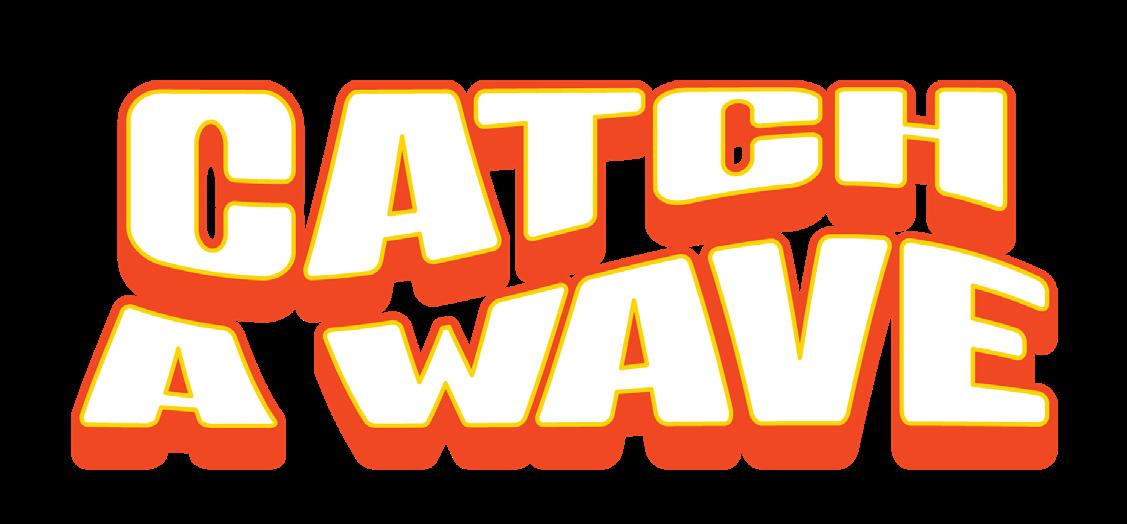
Story by KATHY DENES
If summer has a signature scent aside from freshly mowed grass, it’s the chlorine of swimming pools and water slides. Water parks are the ultimate hot-weather attractions, and some have been popping up lately that go far beyond splash pads and lazy rivers. These parks lure the adventurous with endless waves and whitewater for rafting, kayaking, canoeing and even surfing—no wild oceans or rivers required.
The first of these parks in the country, the U.S. National Whitewater Center in Charlotte, North Carolina, is home to a whitewater river that challenges even the most experienced wave riders. Touted as the world’s largest artificial river, its recirculating treated water flows along dual concrete channels offering rapids
varying in intensity from Class II to Class IV.
The sprawling facility is geared to all sorts of outdoor recreation and is still evolving nearly 20 years after opening. Guided rafts and kayakers with whitewater experience ride the same rapids U.S. Olympic athletes use for training and team trials. The Wilderness and Competition channels provide varying intensity and length before ending in the tranquil pool where riders steer their boats onto a conveyor belt and ride back to the start for another go.
“The USNWC was the first whitewater channel specifically designed for family-level fun at an Olympic-standard facility,” says course lead designer Scott Shipley, an engineer, kayak champion
and three-time Olympian who holds four world titles. “Until Charlotte, every whitewater channel in the world was an Olympic channel first that was later adapted for commercial rafting. We created a channel for family recreational rafting first and then added a competition channel. We focused on the church and school groups that will be using it as a way to help get them active.”
At Riversport OKC in Oklahoma City, Olympic and Paralympic athletes train in rowing as well as canoe and kayak. In fact, it is slated to be the canoe slalom venue for the 2028 Los Angeles Olympics. Its whitewater center offers rowing, kayaking and surfing lessons,


ABOVE: Progressing from bodyboarding to kneeboarding takes very little time with FlowRider’s perpetual waves.
OPPOSITE PAGE: Rafting can get pretty wild on Riverpark Rapids in downtown Oklahoma City.
along with tubing, paddleboarding, highspeed slides and even fun on dry land.
Riverpark Rapids whitewater rafting and kayaking center is in Riversport Adventure Park, in the Boathouse District along the Oklahoma River. Whitewater kayaking and guided rafting start at the top of the artificial river, reached via a conveyor belt. From there, it’s an easy slide into the river to start a memorable ride.
Those ready to Surf OKC can catch a wave, no previous skill needed. Starting with bodyboarding, the staff teaches all the basics to help visitors hang 10. Wipeouts are inevitable, but there are no sharks in the nonstop waters of the FlowRider surf machine. Found all over the world, these compact wavemakers keep endless, shallow water flowing atop a trampolinelike surface.
TEST THE WATERS
Riverpark OKC is open daily 10 a.m. to 5 p.m. in the summer and on weekends in the late spring and early fall. Day passes and memberships are available. Each Thursday through Aug. 7, Riverpark offers NightWater Evening Rafting from 6-8 p.m. riversportokc.org
The Charlotte Whitewater Center will celebrate Independence Day by hosting a free two-day festival, July 3 and 4, with live music and more. Evening events those days include illuminated rafting

one of the six levels of SandRidge Sky Trail.

In the hills above Charlotte, North Carolina, the U.S. National Whitewater Center caters to whitewater enthusiasts ranging from novice paddlers to Olympic athletes.
and kayaking on the river’s Competition Channel, but this requires purchase of an activity pass. See the center’s website for schedules, pass information and events, plus details about any required gear and skill prerequisites. whitewater.org.
Montgomery, Alabama—Whitewater paddlers of all skill levels can enjoy the thrills of rafting or kayaking at Montgomery Whitewater, complete with a 1,600-foot Competition Channel and 2,200-foot Creek Channel. To open its season, Montgomery Whitewater hosted the 2025 Pan American Canoe Slalom and Kayak Cross Championships. It was the site of the U.S. Canoe/Kayak Slalom Olympic team trials for the 2024 Paris games. For more, go to montgomerywhitewater.com.
Sevierville, Tennessee—Before the 2020 opening of Soaky Mountain, surfer Ben Gravy tested its waters, posted his rides on YouTube and declared the park has the “best manmade novelty wave in America—one of the best on the planet.” Soaky Mountain is open daily in July and August and on weekends in September.
Check out soakymountainwaterpark.com.
Rock Hill, South Carolina—Two custom lakes at SouthTown Wake Park await wakeboard riders 7 and older, and there isn’t a boat in sight. Boarders hold ski ropes pulled by overhead cables. Beginners can sign up for lessons on the smaller lake, while the larger lake is equipped with jump ramps and other features that let advanced wakeboarders work on extreme moves. There’s also Aqua Park for paddleboards, as well as an obstacle course on floating inflatables and onshore games.
Get all the details at southtownwakepark.com.
Story by STEPHEN V. SMITH
Fred Johnson says he is “just an old co-op guy,” having joined Farmers Telecommunications Cooperative in the early 1990s, during what he calls a golden age for local telephone service. “It was during that decade that we essentially achieved the long-sought-after goal of a telephone in every home in America that wanted one,” he says.
The transformations that followed were rapid and revolutionary. “In 1993, if you wanted to speak to someone who lived two counties or two states away, you had to write them a letter or call them on the telephone and pay for that call on a per-minute basis,” he recalls.
From cellphones to internet service that moved from dial-up to Multi-Gig connections, FTC met the evolving challenges while serving its members’ needs.
A chapter will soon close on Johnson’s lifelong connection to FTC. He retires July 31 as CEO and steps away from the cooperative he served for 32 years.
Following a career in public accounting, where he specialized in auditing electric and telecom cooperatives, Johnson joined the staff of Sand Mountain Electric Cooperative in the 1980s. An opportunity to become FTC’s chief financial officer presented itself in 1993, and he made the move.
It would be the start of his leadership at the local, state and national levels in an industry that has seen tremendous change.
FTC has been part of Johnson’s life since the day he was born. Indeed, his retirement marks the end of an era of leadership that is rooted in the very foundation of the company.
He remembers well some of the people who saw the need for reliable

telephone service in the area and took on the hard work of forming a cooperative. That is because his father, James, was employee number five when FTC formed in 1954. He was the cooperative’s first office manager and served FTC for three decades, including 10 years as general manager.
“The founders were men and women of integrity,” Johnson says. “They were good people. They were people you could count on, who, at the end of the day, you knew truly cared about those in the communities in which they lived.”
Johnson’s father was a veteran of World War II and, as a member of the Greatest Generation, he modeled a strong work ethic and community dedication before his son and those around him. Johnson remembers “seeing the weight of the company on his shoulders at the dinner table plenty of times.”

This was framed, however, by what Johnson calls “the most significant lesson he ever taught me about business. He would say it this way: ‘Freddy, always take your work seriously. But don’t ever take yourself seriously.’ And I saw him model that for years.”
Johnson considers himself blessed by the opportunities his rural telecom career has brought his way. When he arrived at FTC, the cooperative served approximately 440 square miles across portions of DeKalb and Jackson counties. When current construction projects are complete, FTC will cover 1,700 square miles, encompassing most of northeast Alabama from the Tennessee and Georgia state lines extending south to the suburbs of Birmingham.
On the state level, Johnson led legislative advocacy efforts to help lawmakers understand how broadband deployment happens in rural areas. “Alabama, quite frankly, is ahead of the pack nationwide for the way it has allocated state funds and the manner in which it has done so, to assure accountability of taxpayer dollars,” he says.
Among his national roles, Johnson served on the board and as chairman of NTCA–The Rural Broadband Association, where he sought to remind Congress of the importance of “well-thought-out public policy. And the need for that still exists because rural America still matters.”
Johnson says he appreciates working for a board of trustees that holds him accountable to FTC’s core values of honesty, integrity, fairness and respect. He is also deeply grateful to the management staff that surrounds him. “They’re professional, and they’re committed to their jobs,” he says.
“Our employees as a whole,” he adds, “are an extremely well-motivated and cohesive workforce. I have collectively seen them look after the long-term interests of our customers and, as a result, balance all the interests in a way that has put FTC in a phenomenal position.”
Paul Higdon, a 23-year employee of FTC who has served the past six years as CFO, will succeed Johnson. “He is immensely qualified, entirely capable of taking the reins, and I am absolutely committed to a seamless transition,” Johnson says.
Johnson remains just as hopeful about the rural telecom industry, whose future has appeared bleak many times in the past four decades. Significant changes have indeed threatened the very existence of providers such as FTC, from the widespread adoption of cellphones to the push for fiber connectivity. “Our obituary has been written at least four times,” Johnson says. “And instead of dying, every time we’ve entered a period of prosperity. Will there be future paradigm shifts? Of course. But there’s no reason we
shouldn’t again prosper, just as we have every time.”
On a personal note, Johnson is finalizing work on a doctorate in business administration, with plans to use his research in the rural telecom industry. He also plans to become more involved in charitable efforts.
Everyone at FTC thanks Fred for his leadership, steering FTC in a direction that will make a difference in our community and economy for years to come.
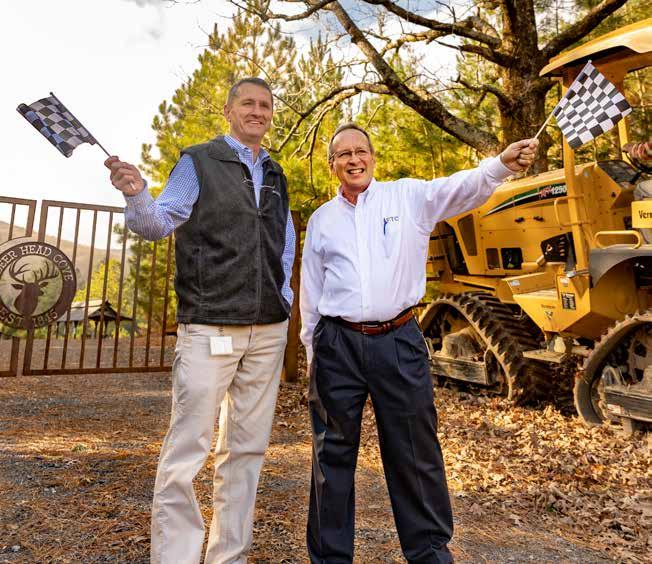

Continued from Page 4
Throughout the years, I have never hidden my personal faith, even though I tried to avoid rubbing it in your face. On a deeply personal level, I would be remiss if I failed to give credit one last time to the Good Lord for his blessings. Throughout my tenure we have begun important meetings with a plea for divine wisdom in the conduct of our business. That prayer was answered more times than I could possibly count. My view of Christian service is actually quite simple. God can do anything he wishes with or without our help. If, for some reason, he lets you be a part of
something, view it as an opportunity for service and do your best. I am exceedingly grateful for the opportunity I was given and the guidance He provided.
And, finally, what would this note be without a shoutout to each of you, our members and customers? Without you, there would be no need for us. Only your support keeps us relevant to the quality of life and economic sustainability of our served communities. So, one last time, thank you for letting us keep you connected.
Story by DREW WOOLEY
Born into the world of smartphones and social media, today’s teenagers spend more time communicating online than any of their predecessors. While that familiarity with the online world builds skills with digital platforms, it also affects how they experience adolescence.
“We see that a lot of their development is shaped through their interactions with technology,” says Kaitlyn Burnell, director of research for the University of North Carolina at Chapel Hill’s Winston Center for Technology and the Developing Mind. “It’s not just reflecting those aspects of development but also fundamentally changing how they’re going through those experiences.”

Experts say the key to making sure those changes are positive is understanding how teens are communicating online and giving them the knowledge to shape their own experiences.
Social media is often the most public form of online communication for young people and an easy way to communicate on a large scale. While social status and approval from peers has always been important for adolescents, Burnell says that influence is amplified by social media’s ability to track those reactions in real time.
“Adolescents place a lot of importance on the number of likes and the quality of the comments they’re getting,” she says. “There’s no real counterpart of that in the past. The best thing I can come up with is maybe the number of yearbook signatures or something old school like that. But it’s very, very different.”
That isn’t always a bad thing. While image-heavy platforms like Instagram can lead some to struggle with body image, recent studies show a well-curated social media feed can inspire young people more than discourage them. Many teens understand how their feeds work.
“To adolescents’ credit, they’re pretty sophisticated in tailoring their algorithms,” says Michaeline Jensen, University of North Carolina at Greensboro associate professor. “If they’re not liking what they’re getting, they game it—unfollow some stuff or press the thumbs down to try and steer toward different content. They’re pretty sophisticated with trying to make their online spaces a place that’s affirming and positive for them.”
Direct messaging is reserved for more personal interactions. Private messages are the go-to way to express love, get emotional support or just check in with a parent.
“It’s how they talk to people who really matter to them,” Jensen says. “Things like day-to-day logistical stuff can make parenting easier, so you can check in and get work done. But it does seem like when teens have those more emotionally supportive conversations over text, those seem to be perceived positively by the kids.”
Written chats proved to be more popular than video chats even during periods of separation like the coronavirus pandemic. While video calls can be an authentic way to communicate with faraway family, the interface can prove distracting when talking to other teens.
“Hypothetically, video communication should be more enriching because it’s as close to a face-to-face conversation as you can get,” Burnell says. “However, the problem that we’ve identified is that
the default for most software is that you see yourself and that isn’t always great. If you’re occupied with how you look, then that’s going to impede those social benefits.”
Teens often spend social time gaming online, whether with local friends or players across the world. While there are concerns about this hurting offline relationships, Sophie Janicke-Bowles, an associate professor at California’s Chapman University, found the opposite can be true.
“When it comes to kids hanging out with friends, social gaming is taking that over,” she says. “And it can actually increase both the online and offline connection when hanging out with friends. So, it can be a contributor to more social interaction rather than less.”
Gaming spaces can still expose players to coarse language or bullying. An awareness of how those platforms are used and who they are exposing adolescents to is crucial for creating a positive experience.
Building digital literacy can be challenging in rural areas, where the digital divide is closing but schools may not have resources to teach how to make the most of digi tal communication.
“It makes sense that if families are more spread out from each other you can’t just go next door and hang out with your friend,” Jensen says. “There might be greater reliance on digital technologies in order to facilitate those social connections, and we don’t yet know how kids will adjust to that.”


But the upside for rural kids can also be much greater. Digital communication can help them stay in touch with local friends who do not live miles away or even find communities around their personal interests that do not exist nearby. The key is staying aware of how they use those tools, even as they are rapidly changing.
“We know that for everyone, these forms of digital communication are just embedded within our daily lives,” Burnell says. “Everyone relies on digital forms of communication for social support. So, it’s important to remember it’s not just good or bad. It depends on the content, it depends on the person, and it depends on what they’re doing.”

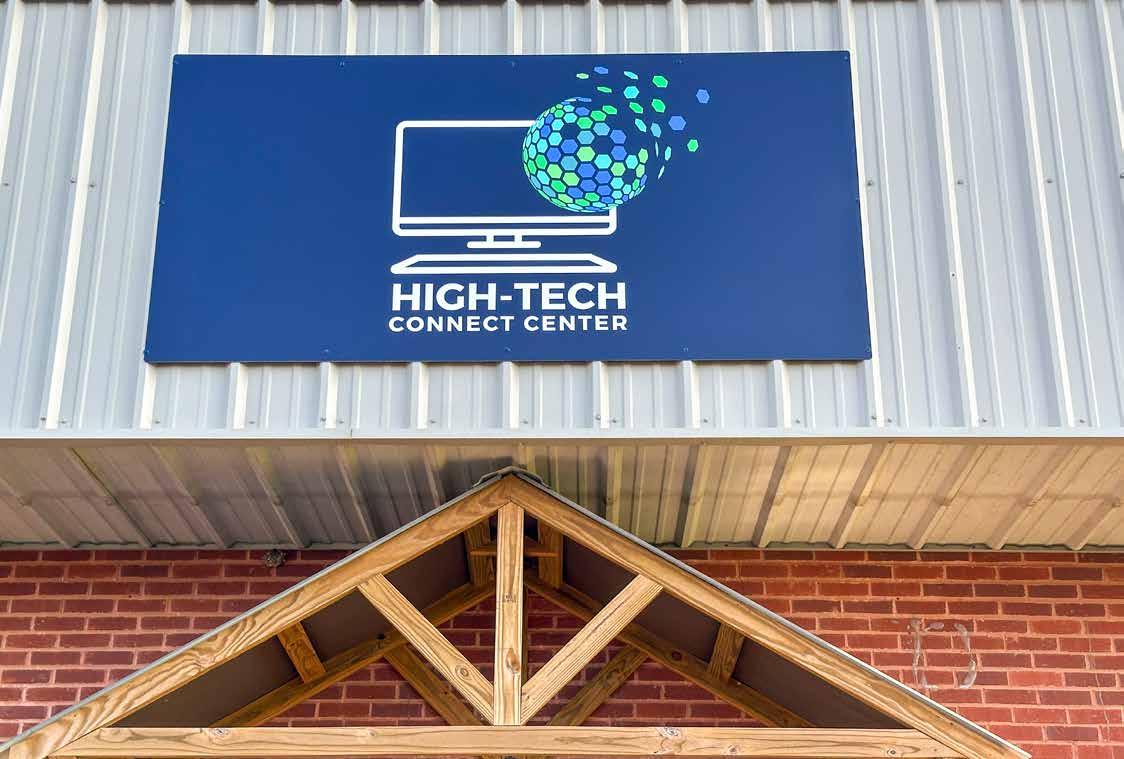
Story by MELANIE JONES
At FTC’s High-Tech Connect Center in Kilpatrick, community members find more than just free internet—they find opportunity.
Inside the High-Tech Connect Center, visitors use free computers and Wi-Fi to complete self-paced digital literacy courses, work on homework, apply for jobs and access government services. On some evenings, up to 25 people, ranging in age from their 20s to late 60s, gather around tables to take English as a Second Language, or ESL, classes. Many bring children and grandchildren, who stay
occupied with center-provided tablets and headphones, playing games that teach essential lessons on online safety and cybersecurity.
Even after the center closes, the outdoor pavilion offers free Wi-Fi, helping students and others stay connected.
But the center is about more than just internet access. “The High-Tech Connect Center isn’t just about connecting to the internet, it’s about connecting people to each other,” says Brandi Lyles, executive vice president for marketing and public relations at FTC. “I’m excited to see how
this will impact the community. Being a cooperative, we’re committed to improving the lives of those we serve.”
Brandi developed the idea for the center and secured a Community Connect grant from the Tennessee Valley Authority to bring it to life. After researching community needs and evaluating the impact a facility like this could have, she knew Kilpatrick was the ideal place. Community Partnerships with DeKalb County Schools, Marshall-Dekalb Electric, Snead
State Community College and Northeast Alabama Community College helped FTC to secure the grant with TVA.
“TVA was very interested in implementing a Connected Community grant project in Alabama,” Brandi says. As a trained digital navigator through the Rural Local Initiatives Support Cooperation program, she had the resources and vision to make the project successful.
Kilpatrick, newly incorporated after a nearly six-year process, is a small, rural community with an estimated population of 3,000 and is predominantly Hispanic. Although FTC provides internet in the heart of town, many homes still lack access, relying solely on cellular data. While local schools issue Chromebooks to students, the High-Tech Connect Center fills a critical gap, offering Wi-Fi, six laptops and six desktop computers—some with dual monitors—for public use during operating hours.
Center Director Candelaria “Candy” Ramirez manages operations and
coordinates ESL classes with Northeast Alabama Community College. She also helps visitors navigate the computers and is working toward becoming a certified digital navigator. A Crossville High School and Snead State Community College graduate, Candy now takes online courses at the University of Alabama in Huntsville. She plans to pursue a career in accounting and, “God willing,” attend law school.
“I knew this opportunity would help me achieve my goals,” she says. Her father once had to travel out of town for ESL classes. Now, she’s proud to offer those same opportunities right in the heart of her community. “I enjoy engaging with the community,” she adds. “That’s one thing—I’m eager to help.”
The first ESL class quickly filled its 25-student cap, and a waiting list formed within weeks. Evening ESL classes began on April 8, led by instructor Taña Andres from Northeast Alabama Community College. “We are hopeful to begin morning classes soon,” says Candy. Both NACC

Students
and Snead State have committed to helping with future educational offerings.
“We decided to start with ESL classes,” Brandi says. “That would get them excited and in the door.” Once there, community members learn about the center’s other valuable programs.
According to the National Telecommunications and Information Administration, digital literacy is the key to bridging the digital divide and ensuring everyone can fully participate in an increasingly online world. It’s like learning to read and write—only in the digital realm—and it’s just as essential.
Students at the High-Tech Connect Center work through a digital literacy curriculum at their own pace. Upon completion, they receive a certificate, which can support them in job searches. The course teaches participants how to use computers, software and mobile devices, how to find and evaluate information online, how to create strong passwords and protect personal information, and how to communicate effectively via email and social media.
Brandi is now working to establish a foundation so FTC can apply for additional grants in hopes of keeping the High-Tech Connect Center open beyond the current TVA grant period.
The High-Tech Connect Center is open Mondays and Wednesdays from 2–6 p.m., and Tuesdays and Thursdays from 10 a.m. to 8 p.m. ESL classes are held Tuesdays and Thursdays from 5–8 p.m. The center is at 19209 Alabama Highway 68, Crossville. Follow the High-Tech Connect Center on Facebook for updates on upcoming educational opportunities.

Few things in life are better than a big juicy burger in the middle of summer. Mouths water at the thought. And it takes just a few ingredients to reach perfection.
There’s more to making the perfect burger than hand-patting the beef, though that’s an excellent start. But before you do that, add a little salt and pepper, a dash of Worcestershire sauce, an envelope of onion soup mix and mayonnaise. Yes, mayo. Ignite the fire, add your burgers to the grill and get ready for a taste explosion. And since it’s summer, add a watermelon salad and finish the meal with a big scoop of easy-tomake peach ice cream—no churning required—and you have a meal fit for a summertime feast.

Food Editor Anne P. Braly is a native of Chattanooga, Tennessee.
1/2 cup mayonnaise
1/2 cup plain bread crumbs
1 envelope onion soup mix
2 pounds ground beef
8 hamburger buns
Combine mayonnaise, bread crumbs and soup mix in bowl.
Mix mayonnaise mixture into ground beef. Shape into 8 patties. When forming
hamburger patties, make a shallow indentation or dimple in the middle of each patty. This divot will keep the center from bulging up as it cooks so that the patty will stay flat and even. Even cooking and heat distribution will keep each patty juicy and consistent. Grill or broil until done. Serve burgers on buns with desired condiments.

2/3 cup balsamic vinegar
1 tablespoon sugar
1 7- to 8-pound watermelon
2 tablespoons fresh lime juice
2 tablespoons olive oil
1/4 cup fresh mint leaves, chopped 2/3 cup crumbled feta cheese
In a small saucepan set over mediumhigh heat, combine the balsamic vinegar and sugar. Bring the mixture to a boil and continue cooking, stirring and scraping down the sides as needed, until it has reduced and is the consistency of syrup,
1 pound fresh peaches, peeled, pitted and sliced
1 14-ounce can sweetened condensed milk
1 8-ounce block of cream cheese
2 cups heavy whipping cream
2 teaspoons vanilla extract
Using a food processor, pulse the
peaches until they are pea-size chunks. Alternatively, dice the peaches by hand and, in a large bowl, lightly mash them to release juices. Cover with a towel and set aside.
In a large mixing bowl or a stand mixer, mix the sweetened condensed milk, cream cheese, heavy whipping cream and vanilla on a medium-high speed until stiff
about 5 minutes. It will thicken as it cools and only yield a few tablespoons. Set it aside to cool while you prepare the salad. Cut the watermelon into cubes or use a melon baller to scoop it into balls. Put the melon pieces in a large bowl.
In a small bowl, whisk together the lime juice and olive oil with a pinch of salt and pepper. Pour the dressing over the watermelon, add the chopped mint and feta cheese, and toss to combine. Drizzle the salad with the balsamic syrup and serve immediately.
peaks form. Gently fold in the peaches until just combined.
Pour the mixture into a freezer-safe container. Cover with plastic wrap, allowing wrap to lie directly on top of the ice cream mixture. This will keep the ice cream from forming crystals on the top. Freeze at least 4 hours for soft-serve ice cream or 6 hours to overnight for firmer ice cream, then scoop away!






